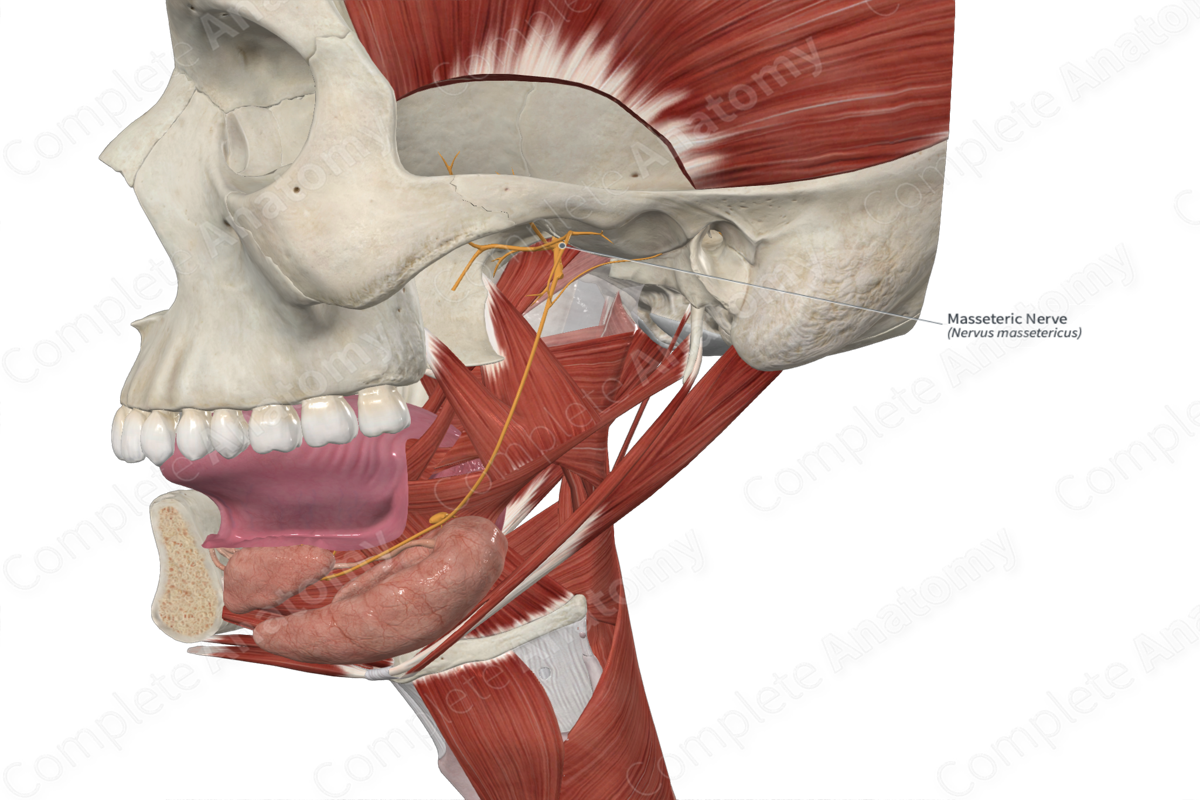
Quick Facts
Origin: Anterior division of the mandibular nerve.
Course: Runs over the lateral pterygoid muscle, then laterally through the mandibular notch to reach the deep surface of the masseter muscle.
Branches: Articular branches to the temporomandibular joint.
Supply: Sensory: conveys general sense fibers from the anterior portion of the temporomandibular joint capsule; Motor: transmits branchial motor fibers to the masseter muscle.
Related parts of the anatomy
Origin
The masseteric nerve emerges off the anterior division of the mandibular nerve as it lies deep to the lateral pterygoid muscle. It originates close to the posterior deep temporal nerve.
Its motor fibers have cell bodies located in the pons in the motor nucleus of the trigeminal nerve. Its sensory fibers have cell bodies located in the trigeminal ganglion.
Course
The masseteric nerve runs superolaterally, ascending deep to the superior head of the lateral pterygoid muscle along with the posterior deep temporal nerve. Instead of ascending to the temporal fossa as the posterior deep temporal nerve does, the masseteric nerve runs laterally over the lateral pterygoid muscle, through the mandibular notch, and inferiorly towards the deep surface of the masseter muscle.
Branches
The masseteric nerve gives rise to the articular branch of the masseteric nerve.
Supplied Structures
The masseteric nerve is a mixed nerve conveying both sensory and motor fibers. The sensory fibers convey general sense information from the anterior portion of the temporomandibular joint capsule. The branchial motor efferents innervate the masseter muscle.
Learn more about this topic from other Elsevier products





